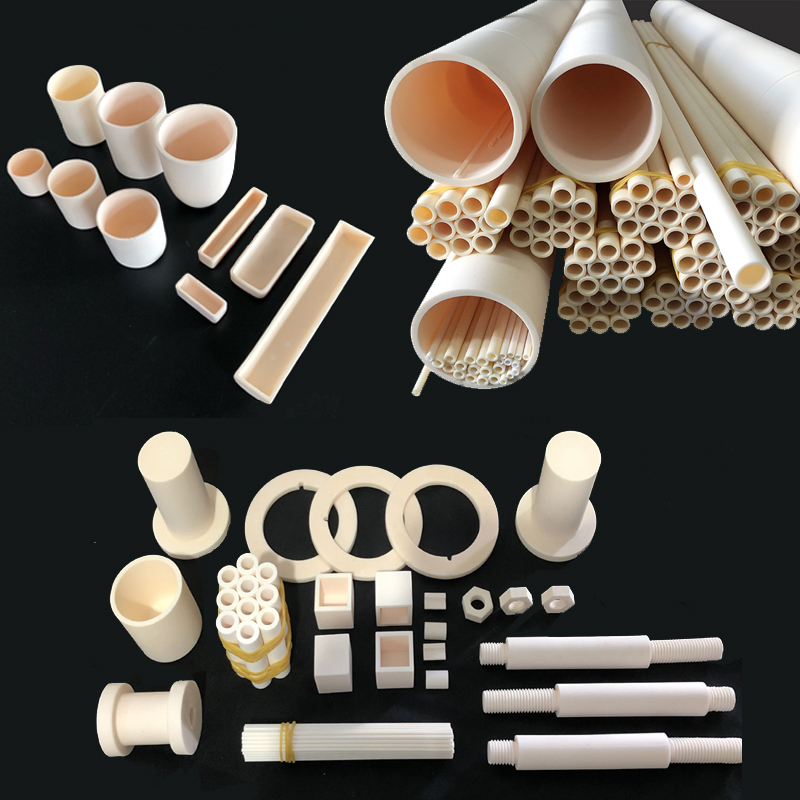The Core Status and Technological Evolution of High Alumina Ceramics in the Field of Refractory Materials

With its unique physical and chemical properties, high alumina ceramics have established an irreplaceable core position in the field of refractory materials. As a key protective material for high-temperature industrial equipment, alumina ceramic technological evolution has always been deeply bound to the needs of industrial development, and it has become an important support for promoting the upgrading of industries such as metallurgy, building materials, and chemical engineering.
I. Performance Advantages Lay the Dominant Position
High alumina ceramics (with an Al₂O₃ content of ≥ 99%) have become the first choice for refractory materials due to their excellent high-temperature stability. High alumina ceramics refractoriness can reach above 1700℃, which is much higher than that of traditional clay bricks. They are especially suitable for extremely high-temperature environments such as blast furnaces for steel smelting and glass melting furnaces. The corundum phase and mullite crystal structure formed inside the material endow them with excellent thermal shock resistance. Even under the working conditions of rapid cooling and heating, they can maintain structural integrity and avoid spalling or cracking caused by thermal stress. In addition, their chemical inertness can effectively resist the erosion of acidic or weakly alkaline slag, significantly extending the service life of kilns and furnaces.
II. Deep Penetration into Diverse Application Scenarios
In the metallurgical field, high alumina ceramic lining bricks are widely used in key parts such as the hearth of blast furnaces and the inner lining of converters. Their high mechanical strength enables them to withstand the scouring of molten metal and mechanical vibrations. In the glass industry, as the refractory lining of melting furnaces, its low coefficient of thermal expansion ensures the stable forming of high-temperature glass melt. In equipment such as cement rotary kilns, its abrasion resistance significantly reduces the loss caused by the friction of materials. In recent years, with the improvement of environmental protection requirements, its applications in corrosion-resistant scenarios such as waste incinerators and chemical reactors have also expanded rapidly.
III. Technological Iteration Strengthens Industry Barriers
Current technological research and development focus on functional compounding and green production. By adding reinforcing phases such as silicon carbide and zirconium oxide, the thermal shock stability and erosion resistance of the materials are further improved. At the same time, the exploration of technologies for preparing high-alumina ceramics from industrial solid wastes not only reduces the raw material costs but also meets the requirements of the circular economy. In the direction of intelligence, attempts are being made to embed sensing elements into the ceramic matrix to achieve real-time monitoring and early warning of the operation status of kilns and furnaces.
IV. Collaborative Evolution of the Industrial Ecology
The popularization of high alumina ceramics has promoted the transformation of the refractory materials industry from the supply of single products to the provision of overall solutions. Enterprises meet the working condition requirements of different kilns and furnaces through customized designs (such as shaped bricks and gradient-structured linings). At the same time, they form technical alliances with high-temperature equipment manufacturers to jointly optimize the matching degree between materials and equipment. This ecological collaboration further consolidates its pivotal position in the industrial chain.
Conclusion
The dominant position of high alumina ceramics in the field of refractory materials stems from their precise alignment with industrial requirements in terms of performance. With the breakthroughs in new materials technology, the boundaries of their applications will continue to expand, evolving from traditional high-temperature protection towards directions such as functional integration and intelligent response, and they will become an important technological carrier for the green transformation of industries.

